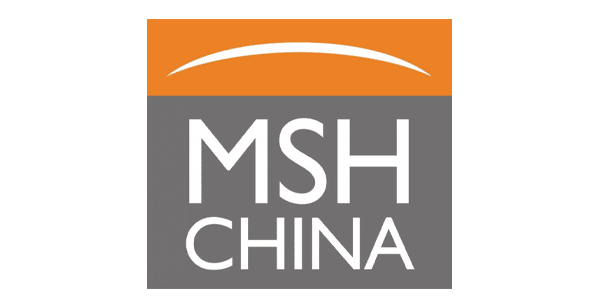How do I know if my child has head lice?
Many head lice infections cause no symptoms, and probably less than half cause itching. You have to look to find out if your child has head lice rather than relying on itching and scratching.
Eggs are not difficult to see; use a strong light and look on the hair shafts. Newly laid eggs are usually within 1.5 cm of the scalp. Older eggs are higher up the hair shaft. If you are not sure whether an object you find is a head louse egg, slide it up the hair shaft using your fingers. Eggs are usually quite difficult to move, whereas hair muffs and other items slide easily. Finding live lice can be difficult since the climbers move quickly when hair is disturbed and are very difficult to see. An easy way to find the climbers is to use the conditioner and nit comb technique:
- Apply hair conditioner to dry hair aiming to cover each hair from root to tip.
- Detangle the hair using an ordinary comb.
- Immediately comb the hair with a fine tooth comb. The best comb for this is the Lice Meister comb. However, plastic nit combs with conditioner are also very effective for detecting climbers.
- Wipe the conditioner off the fine tooth comb onto a tissue and look for lice and eggs.
- Repeat the combing for every part of the head at least 5 times.
- Also examine the comb for lice and eggs.
Conditioner stuns lice for 20 minutes. So once the hair is properly covered with a layer of conditioner, do not delay in combing the lice out! If you find lice, your child should be treated.
If your child has not been treated for head lice before, and you only find eggs, you should consider treating for head lice. However, another option if you do not want to use insecticidal treatments, is to check again the next day using the conditioner and comb technique.
If your child has been treated recently, and you find only hatched eggs, but no lice, you may not need to treat since the eggs could be from the old infection. You should check your child every week using conditioner, a fine tooth comb, and paper tissue as described above.
How do I treat head lice?
Head lice live in the hair and come down to the scalp to feed by sucking blood. So head lice formulations must be applied to all parts of the hair.
Available in Singapore are Derbac M liquid and A Lices. A complete regime consists of two treatments, 7 days apart — the first to kill the climbers, and the second to kill the juvenile lice hatched from the eggs over the intervening 6 days. No product currently available kills all eggs.
- Apply the product to hair aiming to cover each hair from root to tip.
- If you are using lotions, apply the product to dry hair. For shampoos, wet the hair, but use the least amount of water possible.
- For long hair apply the treatment formulation near the scalp and then use an ordinary comb to carry the formulation down the hair shaft to the tip. If product is left on the comb after one sweep, it should be wiped onto the same or a new area of hair at the base and the process repeated. By repeating this process several times, one can obtain an even coverage of all hairs from root to tip. In addition, the hair is tangle free and the use of a fine tooth comb is subsequently simplified.
- Leave the product on the hair for at least 20 minutes.
- Cover the child’s eyes while the treatment is being applied. Ask them to hold a towel against their eyes.
How can I tell the treatment has killed the lice?
If a head lice product works, lice will be dead within 20 minutes. You can test if the lice are killed by doing the following:
- After 20 minutes, use a fine tooth comb through the hair. After each sweep from roots to tip, wipe the combings onto a tissue.
- Repeat this process at least twice and until little treatment formulation is visible on the hair.
- Examine the tissues and see if lice are dead or alive. You may need a magnifying lens. Grade each lice as dead (no movement at all), inactive but alive (louse is stationary, but is moving legs or antennae), or active (louse is crawling on the tissue).
- Assess success of treatment and possible insecticide resistance.
- If all lice are dead, infestation is sensitive to the product used.
- If some lice are inactive but alive, infestation may be partly resistant to treatment, but regard the louse population as
‘sensitive’ if no lice are active. - If some lice are active, infestation is resistant.
- Embryos in eggs will most likely survive, so re-treat in 7 days using the same product.
- For resistant lice, if the treatment is unsuccessful, see a doctor.
Is a second treatment necessary?
Yes, in almost all cases a second treatment is needed since no head lice treatment kills 100% of the eggs. If lice are found at the second treatment, and they are killed by this treatment, there are two options:
- Retreatment with same preparation a third time in 7 days to verify complete cure, or
- 7 days after the second treatment, put conditioner in the hair, comb with a fine tooth comb and check for lice.
The choice of option depends on your philosophy — option 1 being chosen if you want to make sure all lice are killed, and option 2 if you wish to minimise exposure to insecticides.
If treatment has been as successful as possible, only juvenile lice should be found at the second treatment and no lice should be found on the third treatment or examination. If no lice are found at the second treatment, the case has been cured.
What about the nymphs that hatch between treatment?
Between the treatments 7 days apart, embryos that were not killed by the head lice product will hatch. They will be killed by the retreatment, but in the meantime the nymphs will feed and grow. Not an ideal situation!
It is good to manage this situation by using the conditioner and fine tooth comb technique between treatments. If conditioner is applied and then immediately combed out, the nymphs that have hatched will be removed. Do this at least twice in the 7 days between treatment 1 and treatment 2.
Nothing works!
Some cases of pediculosis seem extremely persistent. To solve these you have to use a very systematic approach. Reasons for failure come down to one or several of the following:
- Inadequate application of the product.
- Lice are resistant to insecticide.
- Failure to re-treat to kill nymphs emerged from eggs.
- Re-infection
The order of listing these causes is very important. To determine why the pediculosis persists, you have to start at the top of the list and work to the bottom.
Are head lice treatments safe?
All head lice products contain insecticides and most work by attacking the nervous system of the lice.

































